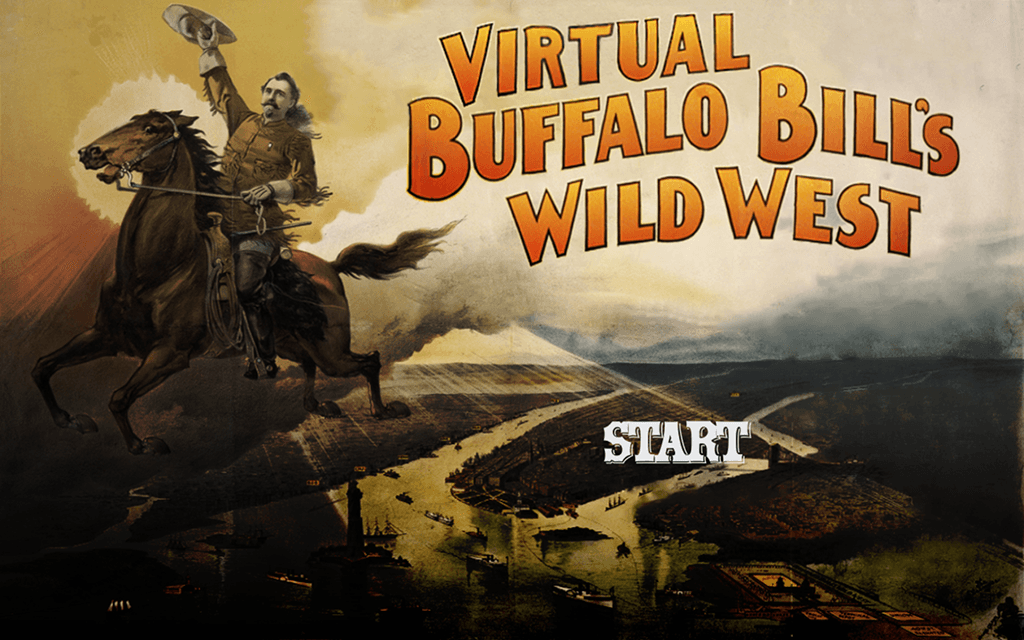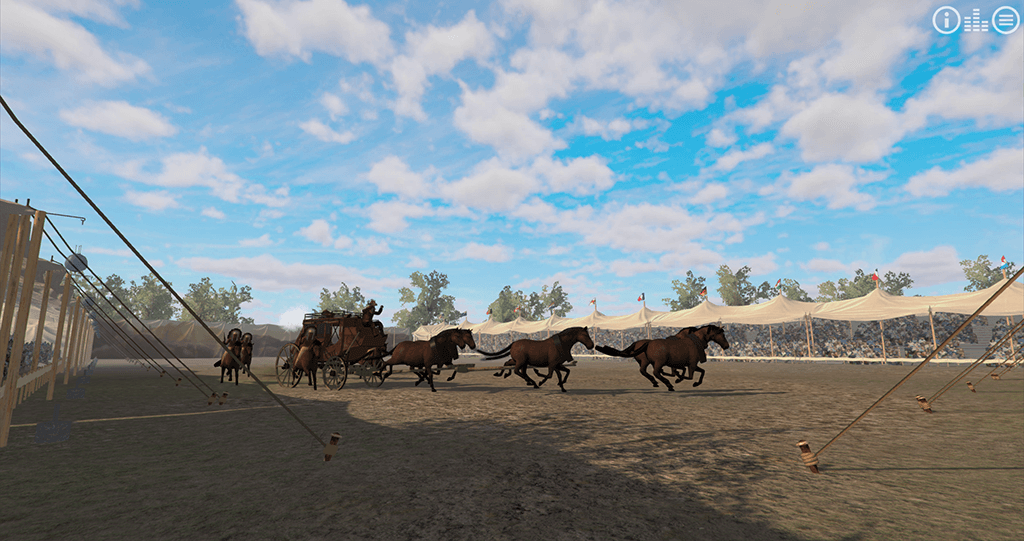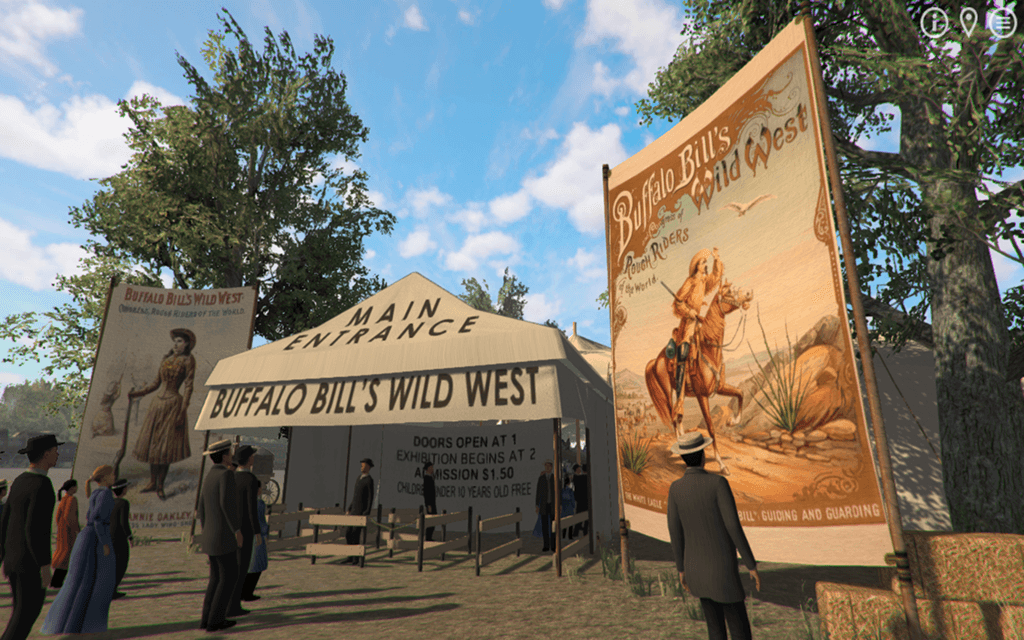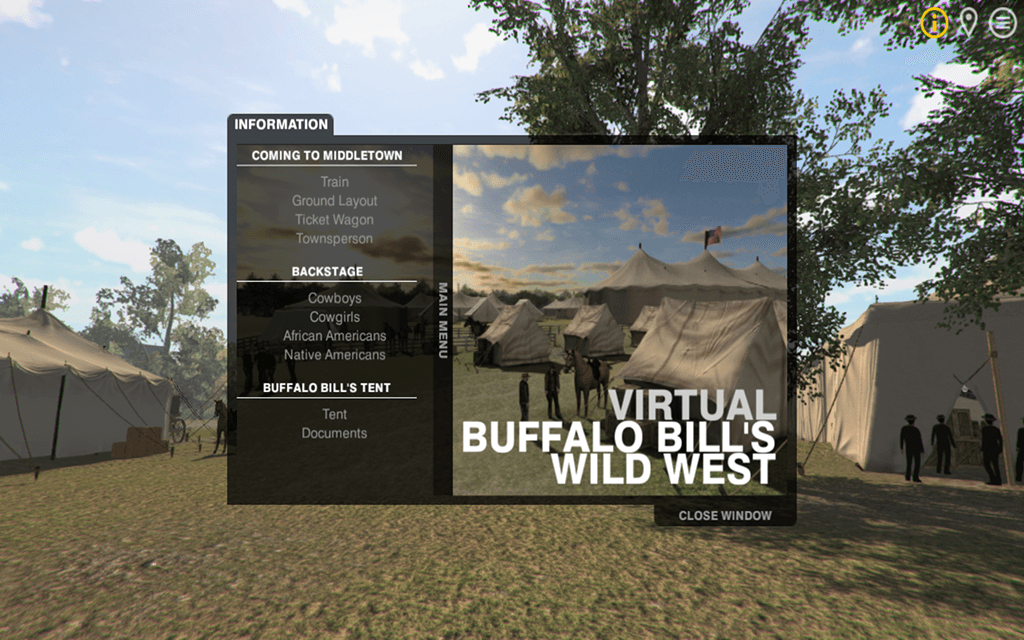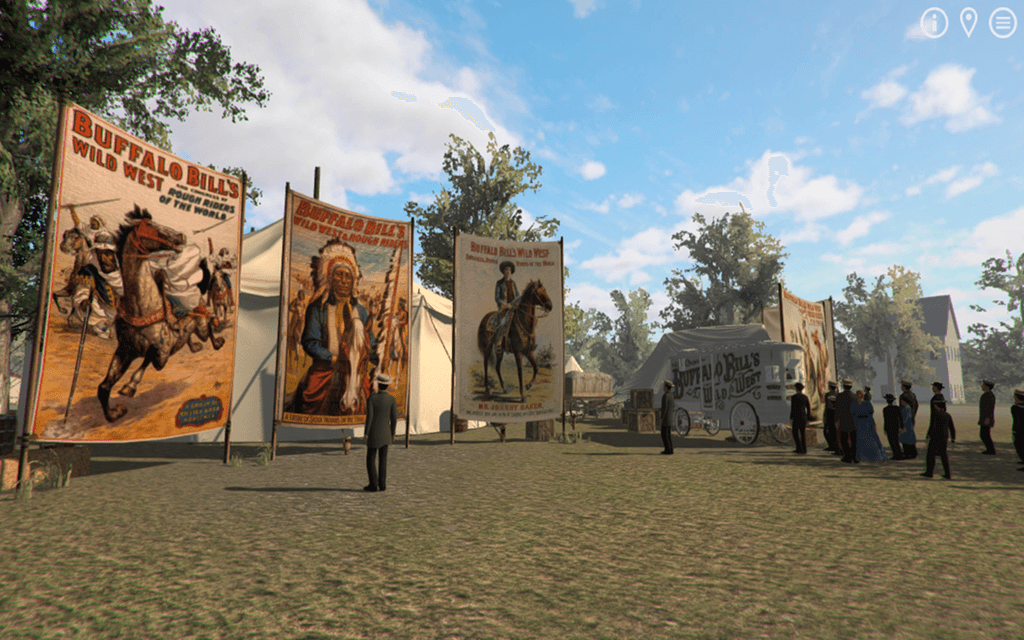Digital artists from Ball State’s IDIA Lab built their virtual simulation of Buffalo Bill’s Wild West with the Unity 3-D gaming platform along with custom software created by the lab.
Cowboys and Indians captivated the country when Buffalo Bill’s Wild West rolled through America in the late 1800s and early 1900s. More than a century later, Ball State digital artists have re-created the legendary showman’s outdoor exhibition.
Working with staff from the Buffalo Bill Center of the West, artists and designers from Ball State’s Institute for Digital Intermedia Arts (IDIA) have crafted a computer-generated world that authentically simulates the Wild West showdramatizing frontier life.
“The visual look and feel of the project is something we’re really proud of,” said John Fillwalk, IDIA director and senior director of the university’s Hybrid Design Technologies initiative.
Fillwalk collaborated on the project with Jeremy Johnston, curator of the center’s Buffalo Bill Museum, and Ball State historians James Connolly and Douglas Seefeldt.
As a senior digital editor of the Papers of William F. Cody, Seefeldt has worked closely with Johnston on several projects the National Endowment for the Humanities recently recognized as among the most significant it funded.
“When Doug introduced me to John, I was excited because all we had to visually represent the Wild West show at the Buffalo Bill Museum was this small architectural diorama,” said Johnston, who is also managing editor of the Papers of William F. Cody. “It gave our visitors an aerial overview of the show but lacked action.
“What the IDIA captured for us is the look and feel of the experience, right down to the sound effects of horses and the stage coach running through the arena.”
Buffalo Bill’s Muncie visit
IDIA-created augmented reality apps will feature objects in the museums’ collections, such as firearms.
The Virtual Buffalo Bill project offered a crossover research opportunity for Connolly, director of Ball State’s Center for Middletown Studies. The center is developing Virtual Middletown, a 3-D visualization of industrializing early 20th-century Muncie, and the Buffalo Bill simulation offered an opportunity to produce a module as part of that endeavor.
Connolly and Seefeldt provided Fillwalk with photographs and newspaper accounts of Buffalo Bill’s 1899 stop in Muncie. “He personified the Wild West for audiences in these small towns,” Connolly said.
Connolly’s and Seefeldt’s research, along with assets provided by the Buffalo Bill Center, allowed Fillwalk and his artists to create beautifully rendered graphics based on data and research, hallmarks that have distinguished IDIA’s work in emergent media design.
“The attack on the Deadwood Stage Coach is simulated down to representing John Y. Nelson, one of America’s original Mountain Men driving the coach,” Fillwalk explained. “And Cody himself—along with his wardrobe—was painstakingly researched and re-created. His appearance was based on specific clothing of Cody’s in the museum collection that we were allowed to photograph.”
Seefeldt said Fillwalk’s re-creations uniquely capture William F. “Buffalo Bill” Cody.
“His show had it all—buffalos, the Pony Express, Annie Oakley, re-enactments of iconic events in the history of the West. He was one of the most famous people in the country, a celebrity of that era, and it’s a thrill to see the way John has brought him back to life.”
Ball State-Center of the West partnership continues
Located in Cody, Wyoming, the Buffalo Bill Center of the West includes the Buffalo Bill, Draper Natural History, Whitney Western Art, Plains Indian and Cody Firearms museums, along with the McCracken Research Library.
The Origins of Buffalo Bill
 Born in 1846, William F. Cody rode for the Pony Express, served as a military scout and earned his moniker “Buffalo Bill” while hunting the animals for the Kansas Pacific Railroad work crews. Beginning in 1883, he became one of the world’s best showmen with the launch of Buffalo Bill’s Wild West, which was staged for 30 years, touring America and Europe multiple times.
Born in 1846, William F. Cody rode for the Pony Express, served as a military scout and earned his moniker “Buffalo Bill” while hunting the animals for the Kansas Pacific Railroad work crews. Beginning in 1883, he became one of the world’s best showmen with the launch of Buffalo Bill’s Wild West, which was staged for 30 years, touring America and Europe multiple times.
The IDIA Lab’s next project for the center will be a series of augmented reality apps featuring objects in each museum’s collection. By holding electronic devices over images like a grizzly bear or gun, users can learn more about them as 3-D models of the subjects pop up on screen.
“By using their phones or tablets, visitors can see museum exhibits come to life,” Fillwalk said. “All of our work is meant to give visitors a greater appreciation for these assets with the aid of our digital interpretations.”
Johnston said what he likes best about Fillwalk’s approach is the way “he puts technology in the users’ hands.”
“I’ve seen so many younger people walking through our museums with their heads down, glued to their iPhones and iPads. With John’s help, I’m excited that we’re taking something they’re so familiar with and using it in a way to get them to engage with our exhibits here.”
Funding for the Virtual Buffalo Bill project was provided by a grant from the Buffalo Bill Center for the West, which was matched by internal grant funding from Ball State.
http://cms.bsu.edu/news/articles/2015/10/ball-state-gives-buffalo-bills-wild-west-a-virtual-makeover


